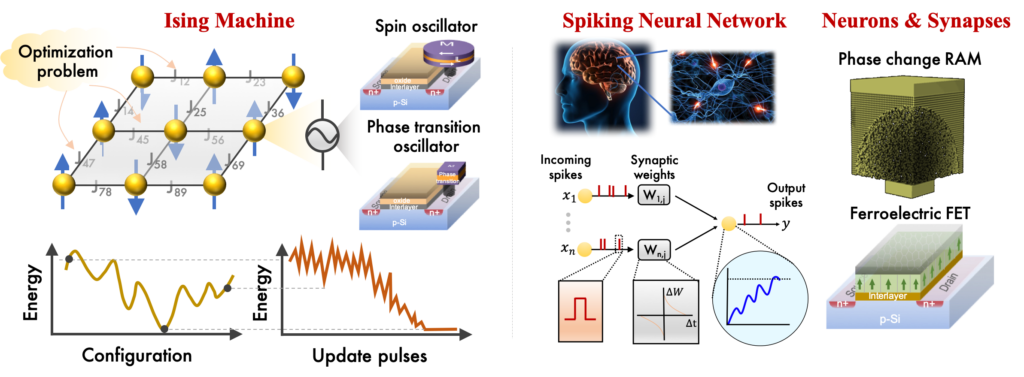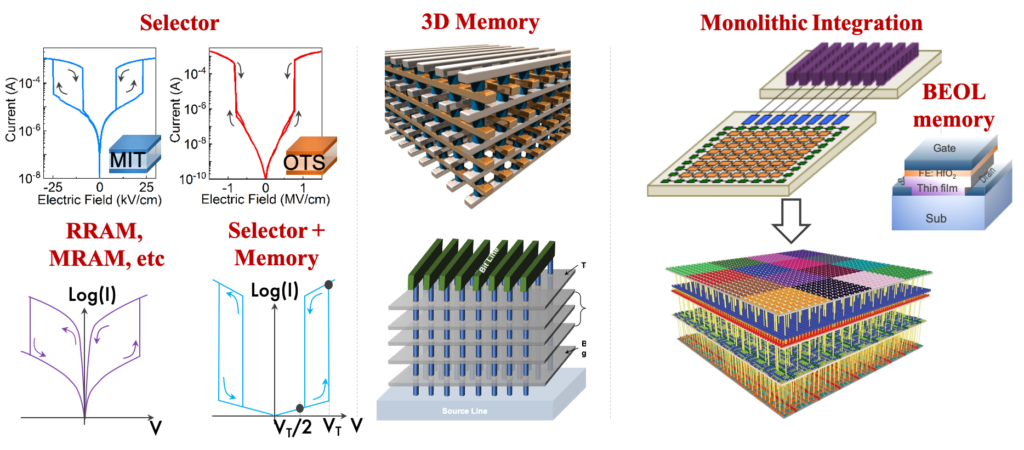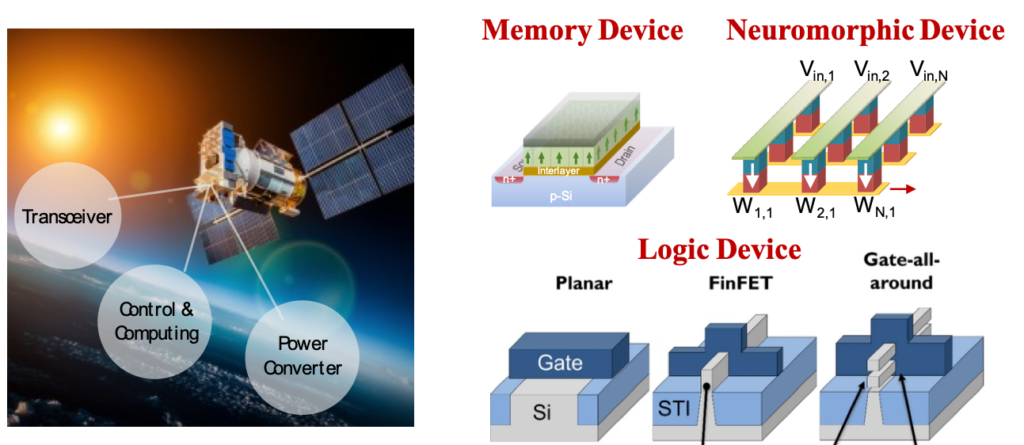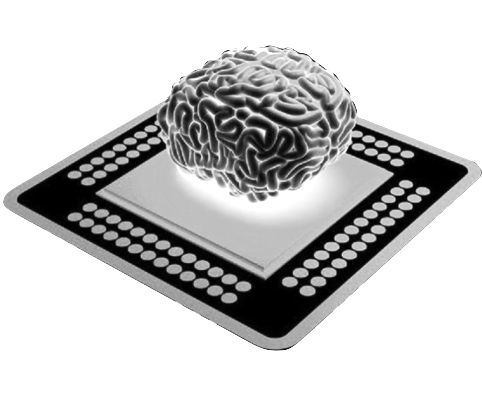Emerging Devices for AI Accelerator
Artificial intelligence is ubiquitous in our everyday life. It has shaped our way of information processing and is projected to significantly transform our modern society in the future. To ensure its future success, it is imperative to build AI specific hardware to accelerate its wide deployment in either IoT devices or cloud servers. Various AI accelerators based on conventional Von-Neumann architecture has been designed, but they all suffers from memory transfer bottleneck. As a result, there is a huge gap between those devices and human brain in terms of performance and energy efficiency. Therefore, closing this gap with novel devices and architectures is one of my major interests. One promising architecture is the crossbar structure, which can efficiently perform matrix multiply operation in analog domain, directly within the memory. Projected improvement in performance and energy efficiency are estimated about 1,000x compared with existing solutions. The key then lies in design of analog synapse weight cells, which stores the network weight in crossbar structure, to support this hardware platform.
[IEDM 17] [IEDM 18_p1] [IEDM_18_p2] [TCAS II]

Emerging Devices for Unconventional Computing
Conventional computing systems based on Von-Neumann architecture is hitting a power wall due to the memory transfer inefficiency. This exacerbates with the advent of big-data era, where massive amount of data is generated and need to be processed. Therefore, novel unconventional computing systems able to break this barrier are highly desired. Along this direction, several candidates are worth investigating. The first is spiking neural network, where the computation is performed with spike events. In this system, the focus will be placed on designing the devices that mimic neuron’s functions, demonstrating synapse devices that can implement the learning rules of the network, and system demonstration of the functionality. The other interesting system is Ising Machine, which is highly powerful to solve hard combinatorial problems. By allowing the system to evolve itself to minimize its energy, the Ising Machine can automatically solve the hard problem. Therefore, in this direction, emphasis will be placed on demonstration of Ising Machine using self-sustained oscillators.
[Nature Electronics 18] [IEDM 18_p3] [VLSI 19_p1]

Memory Technology and Monolithic Integration
Nowadays, there are two types of solid-state memory devices. One is volatile and fast DRAM memory and the other is nonvolatile and slow Flash memory. Bridging the vast gap between these two types of memory is a pressing need and a big challenge. Crossbar memory based on two-terminal resistive storage technologies (e.g., ReRAM, PCRAM, STT-MRAM, etc.) has been heavily investigated and is one promising technology. The key challenge is to engineer both the memory and select devices to cut off the sneaky path existed in the array. Another promising technology is the vertically integrated ferroelectric field effect transistor (FeFET). One big advantage of FeFET is its electric field driven write mechanisms, compared with the current driven in resistive devices. Therefore it has superior energy efficiency. The research direction is to design memory cells and select devices that can be monolithically integrated in the back end. This involves process integration, device design, compact and physical modeling, and 3D integration. One of the near term goal is to demonstrate FeFET with metal-oxide channel (IWO, SnO2, etc.) and stack multiple layers. Exploration of novel exciting applications of these devices are also highly interested.
[VLSI 18_p1] [VLSI 19_p2] [TED 18] [EDL 18] [DAC 19] [DATE 18] [Nanoscale 18] [APL 17] [APL 19]

Cryogenic CMOS
Cryogenic operation of CMOS devices and circuits are increasingly popular now. One of the major applications is for high-performance computation, where the speed and throughput are key concerns. So one open question is to evaluate the performance gain of CMOS devices at cryogenic temperature. Second rising application is for quantum computing. The qubits has to be cooled down to mK. Therefore the interface circuits to access individual qubit also need to operate at low temperature, usually around 4K. Therefore, the success of quantum computer also heavily relies on the classical electronics. In this direction, the main research effort is to develop a cryogenic CMOS model, which allows accurate design of CMOS circuits. It is also important to understand the performance limiter (e.g., interface traps, tail states, etc.) and optimize the device design. Understanding the reliability at cryogenic temperature is also an important task.
[DRC 2019]

Reliability and Radiation Effects
Reliability is critical and a key consideration for electronic systems, especially for space applications, where harsh radiation and severe temperature fluctuation exist. Nowadays, with the boom of space exploration activities increasingly from private companies, such as SpaceX, there is an urgent demand over radiation hardened electronics. Not to mention that human beings will become interplanetary species in the near future. All the electronics nowadays face a serious tradeoff between reliability and performance. Breaking this dilemma would require novel robust devices. In this direction, emphasis will be placed on understanding of reliability degradation mechanisms through characterization, modeling, and design. The top interest right now is to develop memory (ferroelectric memory and crossbar memory), AI accelerator (weight cell) and RF/power (GaN and Ga2O3) devices for space applications.
[IRPS 16] [TNS 17] [DRC 17] [TNS 16_p1] [TNS 16_p2] [RADECS 16]

